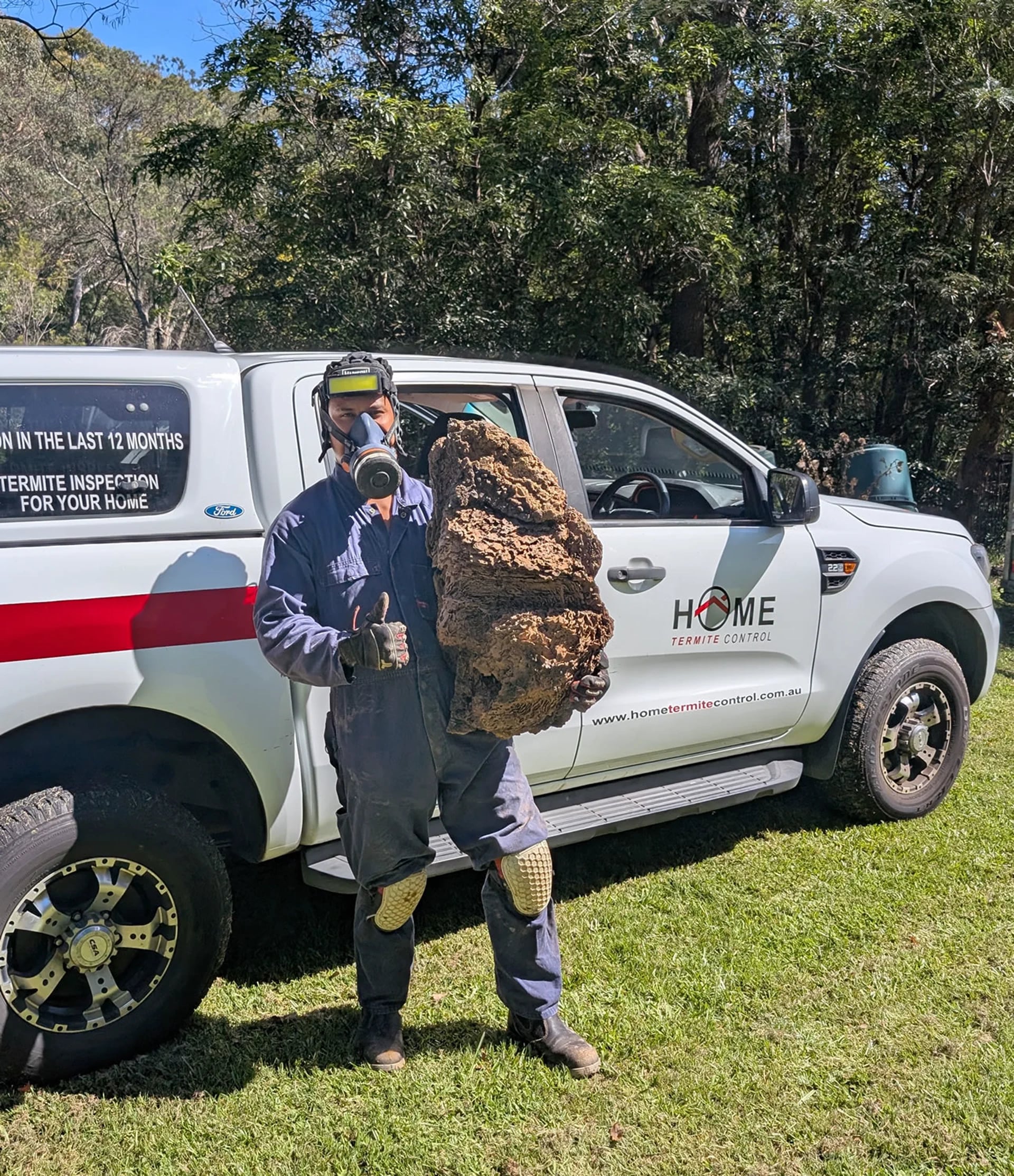
Termite Home Inspection Sydney
Termite damage can cost tens of thousands—our expert inspection is just $345
Licensed technician based in Sydney North Shore, servicing Sydney wide. Upfront pricing. No surprises. Termites can ruin your property and cost you thousands, get us to inspect your property before they do.
Get a callback within 24 hours
Sydney's Most Thorough Termite Inspection Service
Trust the experts for prevention! Regular inspections save you money and protect your property from these 'silent destroyers'.
Thorough Inspection
Comprehensive property inspection covering subfloors and roof voids. Includes a detailed report with photos and expert recommendations.
Advanced Technology
We stay current with the latest advancements in termite control.
20+ Years Experience
Over two decades of expertise in preventing and treating termite infestations across Sydney.
Fast & Reliable Service
Quick response times and reliable service across the entire Sydney metropolitan area.
Award-Winning Service
Nominated pest manager of 2013, 2014, and 2015. Fully licensed and insured with 100% service warranty.
Complete Protection
Eco-friendly treatments including chemical applications, termite dusting, and baiting systems.
Annual Inspection Benefits
We recommend regular annual termite inspections in Sydney. The inspection cost is a small fraction of what you'll spend fixing termite damage. Early detection is key to protecting your investment.
Our Warranty
- 100% Service Warranty
- Fully Licensed & Insured
- Competitive Pricing
- Expert Recommendations
Latest Articles
Stay updated with our latest termite control insights
Helpful Tips on Installing and Understanding Termite Barriers
Learn about termite barriers and how they can protect your home from termites.
Pest & Termite Control Eastern Suburbs Sydney
Expert termite control services in Sydney's Eastern Suburbs. Learn about our comprehensive pest management solutions for residential and commercial properties.
Top 5 termite control natural methods
Discover eco-friendly and natural approaches to termite control. We explore effective organic methods that are safe for your family and the environment.
What Our Customers Say
Chris Buck
Troy Gudgeon
On time, very professional great service.
Jess Fraser
Thank you for geting rid of the termite nest in that dead tree out the back! Phew! And for all your tips on how we can reduce our risk of getting termites around our home, we felt really empowered with the knowledge you shared and have followed every tip you gave us. You were always professional, polite and punctual and thank you for going the extra mile. See you next year! Highly recommended.
Printing Services Wollongong - Printing in Wollongong, Australia - Cheap Printing Wollongong
Searching for a best Pest Control In Sydney? Then I guess you should stop it here :-). I guess this guy is born with termites! Lol (no offence :D) He is very good! Offered me few different solutions and told me what would be the best and what would be the cheapest! He is very smart and I enjoyed our little chat! Hopefully I would not need his service again, but it would be always nice to chat with you.
Chris Buck
Troy Gudgeon
On time, very professional great service.
Jess Fraser
Thank you for geting rid of the termite nest in that dead tree out the back! Phew! And for all your tips on how we can reduce our risk of getting termites around our home, we felt really empowered with the knowledge you shared and have followed every tip you gave us. You were always professional, polite and punctual and thank you for going the extra mile. See you next year! Highly recommended.
Printing Services Wollongong - Printing in Wollongong, Australia - Cheap Printing Wollongong
Searching for a best Pest Control In Sydney? Then I guess you should stop it here :-). I guess this guy is born with termites! Lol (no offence :D) He is very good! Offered me few different solutions and told me what would be the best and what would be the cheapest! He is very smart and I enjoyed our little chat! Hopefully I would not need his service again, but it would be always nice to chat with you.
Ready to protect your property?
Join our satisfied customers and get your property inspected by Sydney's most trusted termite experts. Book your inspection today and enjoy peace of mind tomorrow.
Frequently Asked Questions
Everything you need to know about our termite control services

Protect Your Home - Schedule An Inspection With Sydney's Local Termite Expert!
For over two decades, Sydney homeowners have trusted Brad and the team for expert termite inspections & treatment.
